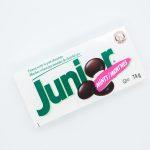Wondering if your cornstarch has gone bad? We answer everything you need to know about cornstarch and more in this article!

If you’ve had corn starch in your pantry for a while now, you may be wondering: does cornstarch go bad? You don’t want expired corn starch in your meals, and if you’re a huge fan of cornstarch, you don’t want it spoiling the taste of your food.
Now, you’re filled with all these questions: how long does cornstarch last? Can it go bad? What happens to your old cornstarch?
You’re in luck, however: corn starch actually doesn’t go bad naturally! It has an indefinite shelf life – unless certain circumstances happen. Read on to find out everything you need to know if your cornstarch has gone bad, and what to do to store it properly.
What is Corn Starch?
Corn starch is a kitchen staple typically used as a thickening agent for most sauces, soups, and gravies. It’s a fine white material with a powdery texture and neutral flavor! It’s made from the endosperm of corn kernels, and is naturally gluten-free.
Does Cornstarch Go Bad?
Cornstarch has an indefinite shelf life. However, there are certain circumstances where cornstarch can go bad. For example, pantry bugs inside the cornstarch container can make it go bad, along with moisture exposure. Unlike baking powder and baking soda, it also doesn’t lose potency with time.
How to Tell if Cornstarch Has Gone Bad

Worried that your cornstarch has gone bad? Despite its long life, cornstarch can go bad under specific circumstances. Here’s how to tell if your cornstarch package has gone bad over time:
01 Mold Has Formed
Mold, like all food, is pretty easy to spot with cornstarch. Look out for gray or green mold forming anywhere in your cornstarch container. Moldy food can have mycotoxins, which can cause diseases in the person consuming them. Don’t go about cooking with moldy cornstarch!
To avoid mold from happening again, make sure your cornstarch is stored properly and away from moisture.
02 Bugs Have Appeared
Bugs anywhere near your food is not a good sign. While small, these bugs are typically dark brown or black in color, so it will appear emphasized in the white color of the cornstarch. These bugs can bring harmful bacteria to your cornstarch, and may leave larvae and eggs.
To be sure your foods won’t be spoiled and your health won’t be in danger, throw away bug-infested cornstarch once you notice bugs in them!
03 It May Have a Bad Smell
If the signs of cornstarch going bad can’t be seen with the eyes, go for the smell. If you’ve stored cornstarch for a long time with the rest of your food in your pantry, give it a sniff test.
Pure cornstarch will have a corn’s smell. Spoiled cornstarch, meanwhile, will have a strong, unpleasant scent. Despite the very long shelf life of cornstarch, there’s still a possibility it might have gone bad. So go ahead, smell your cornstarch to make sure!
04 There’s a Sour Taste
At this point, your cornstarch may have checked out on everything. It has no mold, bugs, or a bad smell. However, if you want to be completely sure your cornstarch is okay to use for cooking food or adding to a sauce recipe, taste it.
Pour at least a fourth of a tablespoon of cornstarch and put it into your mouth. If the cornstarch powder tastes sour, it’s a sign that you should throw the cornstarch out – and not incorporate it into any food recipe.
05 The Cornstarch Is Lumpy
Lumpy cornstarch doesn’t mean you throw it to the trash bin right away. It is a sign that moisture has gone into your cornstarch to make it lumpy in the first place! Mold may start to form soon.
The easiest – and quickest – solution to this is to cook the cornstarch right away into your foods. Don’t leave it hanging around for the powder to form mold and make it go bad.
How to Store Cornstarch Properly
Now that you’ve identified how to tell if cornstarch has gone bad, let’s talk about how you can avoid this predicament in the first place. For one thing, you have to think about proper long-term storage.
If you want the cornstarch shelf life to stick around for as long as possible, proper storage is a must. Here’s how you can do just that:
01 Go For Airtight Jars
An airtight container for your cornstarch is your new best friend. You want to keep it away from all possible moisture – whether its warm water or cold water. It also keeps pantry bugs, strong odors, and insects at bay!
02 Look for a Cool, Dark Place
Exposing your jar to direct sunlight or extreme temperatures is never a good idea. The shelf life of cornstarch may shorten then! Instead, look for a cool, dark place in your pantry where you can store your cornstarch inside.
03 Keep Moisture Away From Cornstarch As Much As Possible
Don’t leave your cornstarch exposed to room temperature for too long, and don’t let any kind of hot water or cold water to come into contact with your cornstarch. Once you get your cornstarch wet, you’re exposing it to mold and shortening the shelf life of cornstarch itself.
Can You Freeze Cornstarch?
Now you know how to corn starch is stored properly, but is there another way that you can extend its shelf life? For example, can you freeze corn starch to make it last longer?
Yes, you can store your corn starch by freezing it. However, it’s not recommended to store cornstarch in this manner. Instead of having a good thickening agent at your disposal, when you store cornstarch in your freezer, it will make whatever sauces or gravies you make spongy.
The same goes for anything you do make with corn starch. When heated, the starch molecules bond and expand. When frozen, the thickening agent loses its touch once thawed.
If you want something with thickening power for your cooking recipes that you can freeze, go for flour instead. Mix some flour with butter to create a roux that can thicken your soups and any sauce you have in your cookbook. There are a few catches to substituting cornstarch with flour, but it works fine for most foods!
How Can You Eat Cornstarch?
Cornstarch can be eaten in small quantities and in moderation. However, you shouldn’t consume it raw! You can be exposed to digestive disorder symptoms such as gas and bloating. It may also cause harmful side effects if the raw cornstarch has bacteria in it.
It’s best eaten when mixed with other food, typically as a thickener. With that, let’s move on to the uses of cornstarch below:
Uses of Cornstarch
- Use It as A Thickening Agent
For most recipes, cornstarch is used as a thickening agent. How this happens is actually quite cool science: starch molecules bond and expand like little sponges. Cornstarch has a lot of hydrogen molecules that bond with water. These hydrogen molecules expand in volume especially when it simmers.To use it for foods like sauce, soups, and gravies, you can add a tablespoon of cornstarch powder per cup of the sauce, soup, or gravy. Add some water to make a slurry and then a paste.By this time, the food you’re making should have hot, simmering liquid already. Add the cornstarch to the foods and bring to a boil until all starchy taste has melted away. Be careful about the time that you cook your food – you don’t want it to thin out again! - Try It as An Egg Substitute
As cornstarch can thicken pretty much anything effectively, it’s also a good substitute for a lot of foods, including eggs! When you mix the powder with water, the result is an eggy, viscous substance. Two tablespoons of cornstarch per three tablespoons of liquid will get you an eggy result.So, if you ever find yourself lacking eggs for baking or cooking, you can use a cornstarch mixture instead. - It’s a Cost-Effective Remedy for Your Skin
With cornstarch, you can whiten your skin, help it retain moisture, or use it for your skin allergies. You would need a mixture of milk, egg white, honey, and brown sugar for some of these remedies, but they’re all ingredients that can be found in your pantry!Overall, cornstarch can help you improve your skin’s health. Give it a go today! - It’s Natural Starch for Your Clothes
You don’t have to keep buying spray starch or send your clothes off to the cleaners every week. Make your homemade starch at home with cornstarch! Just mix cold water, cornstarch, and essential oils in a spray bottle and get to spraying. It’s a modified starch spray you can have in no time at all. - It Can Be Used as Dry Shampoo
Mix a quarter of baking soda and a quarter of cornstarch in a big mixing bowl. Transfer to a large shaker and you’ve got yourself some good dry shampoo! It will absorb all the dirt, oil, and grease you need gone from your scalp. - Remedy Sunburn Pain
Got some painful sunburned spots? Cornstarch can remedy those for you. Dab a cornstarch and water paste on the spots and it’ll be quite a comfort! - Make Baked Goods
Cornstarch is a good ingredient for baking, as it provides more structure for your baked goods. Again, it should be turned into a slurry before adding it to your baked goods. - Create Crispy Coatings
Aside from baking, frying is also great with cornstarch! You can use it to coat anything you might be frying, and it also absorbs less oil along the way. Coat the dish lightly before putting it into the frying pan.
Substitutes for Cornstarch
01 All-Purpose Flour
All-purpose flour is the white wheat flour we all use for a variety of baked goods! However, you should be careful as it causes sudden spikes in your blood sugar level. Don’t use too much when substituting it for cornstarch when you thicken sauces!
If you have diabetes or any underlying conditions that could be worsened by using all-purpose flour in your foods, use the rest of the substitutes we included in this list instead.
02 Rice Flour
This substitute comes from finely milled rice. It’s used in a variety of dishes, including rice cakes, noodles, and other pastries. It’s also a great cornstarch substitute! Its thickening power is half of that of cornstarch. For the best results, you have to go ahead and take two tablespoons of rice flour for every tablespoon of cornstarch that you use.
03 Arrowroot Powder
Arrowroot is another ingredient you can use to thicken any recipe! If you want to keep the shine and color of your food, arrowroot is a good ingredient to have in a container. It’s white, fine, and is flavorless.
To activate the thickening powers of arrowroot, however, you have to cook it over low heat. High temperatures can weaken and diminish
To substitute for cornstarch, you have to double the quantities. If you take a spoonful of cornstarch from the container, you have to take two spoonfuls of arrowroot powder.
04 Potato Starch
This starch is typically used for gluten-free baking, or as a thickener for different recipes. As a result, it’s a pretty good substitute for cornstarch! You can substitute it with a 1:1 ratio, so one tablespoon of cornstarch is equal a tablespoon of potatoes’ starch as well.
05 Tapioca Starch
If you’re looking for another starch for gluten-free baking, tapioca is the one to choose! It’s also good for creating crispy textures, thickening stews and sauces, and even pie fillings.
Does Cornstarch Lose Effectiveness Over Time?
Unlike other products, cornstarch won’t lose its effectiveness over time. You can use it with the same power as before no matter how long of a time has passed! Keep it safe from moisture in your container and it will have the same power over time.
How Long Does Cornstarch Last?
How long does cornstarch last? As long as you keep your cornstarch in an airtight container in a dark place by the kitchen cabinet, corn starch will last for a long time! If you don’t have moisture coming into the container your corn starch is in, your cornstarch will last long beyond its best-by date.
Is Corn Syrup, Corn Starch, and Corn Flour Gluten-Free?
Yes, any products made from corn is naturally gluten-free! That includes corn syrup and corn flour, too. If you’re planning to go on a gluten-free diet or if you have gluten sensitivity, you can definitely buy cornstarch and keep it as one of your staples.
Is Cornstarch Bad For You?
Bad cornstarch isn’t exactly a thing! Keeping yourself to small servings of cornstarch is not a bad thing, but large servings won’t do you any good. They have a lot of carbohydrates, and not a lot of nutrients.
FAQs:
How can you tell if cornstarch is bad?
There are a few signs to tell if cornstarch has gone bad. Mold, the appearance of bugs, a sour taste, a bad smell, and a lumpy appearance can show if cornstarch isn’t stored properly. Once you’ve seen these signs, it’s best to throw the cornstarch out and get a new one!
Can I use cornstarch past the expiration date?
If your cornstarch appears to be okay, then yes, you can use it past its expiration date. The expiration date of cornstarch indicates that it has a pretty extended shelf life. However, you have to be careful in storing cornstarch.
Even if has a pretty long expiration date, cornstarch can go bad if not stored properly.
Can I use 2-year-old cornstarch?
Yes, as cornstarch has a long shelf life. However, if you start seeing signs that cornstarch has gone bad, it may be time to throw it out and buy a new one for your baked goods!
How long does cornstarch last?
How long does cornstarch last? Well, it depends if you the cornstarch was stored properly in the first place. Don’t let moisture get in your container, and you’re good to go. The answer to “how long does cornstarch last?” is quite a long time if you store it properly!






